Welcome to the April 2019 issue of the Global Washington newsletter.
IN THIS ISSUE
- Letter from our Executive Director
- Issue Brief: Failing Fast Forward: Learning to Build Water Systems that Last
- Organization Profile: WaterAid: Working Towards Clean Water for All
- Goalmaker: Kirk Anderson, Director of International Programs, Water1st
- From Our Blog: Introducing Project WISE (WASH-in-Schools for Everyone)
- Welcome New Members
- GlobalWA Member Events
- Career Center
- GlobalWA Events
- GiveBIG 2019
Letter from our Executive Director
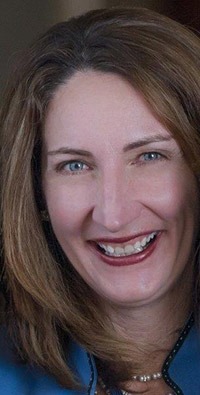
Water is an essential element for survival, yet efforts to ensure that everyone has access to this precious resource have faced an uphill battle. According to UNICEF, 30 to 50 percent of water, sanitation, and hygiene (WASH) project fail after two to five years. In the business community, “failing forward” is often considered a sign of progress – companies make mistakes, they learn from them, and they find ways to improve. In global development, however, we often avoid acknowledging mistakes, in part due to fear of alienating donors.
In order to accomplish the seemingly impossible – such as ensuring clean water for everyone on the planet – we must be willing to innovate and try new approaches. In the process, despite our best efforts there is always the potential for failure.
This month we’re focused on learning from failure when it comes to clean water projects. Yet the same could be said of any other global development sector – healthcare, education, agriculture, human rights, etc. The more open and transparent we can be about what’s working and not working, the faster we can course-correct and have the greatest impact.
We call our members “Goalmakers” for a reason. With the UN Sustainable Development Goals in our sights, we have dedicated the next decade to helping our members accelerate progress toward a better and more sustainable future for everyone.
In this month’s newsletter you will read about an inspiring Goalmaker, Water1st’s Director of International Programs, Kirk Anderson, who has devoted his career to ensuring people have reliable access to clean water year-round. You’ll also read about WaterAid’s comprehensive approach to helping communities advocate for and implement self-sustaining water infrastructure. I also hope you’ll join us on April 25th for Failing Fast Forward, an in-depth conversation on this topic with our members: MSR Global Health, Splash, Water1st, and WaterAid.

Kristen Dailey
Executive Director
Issue Brief
Failing Fast Forward: Learning to Build Water Systems that Last
By Joanne Lu
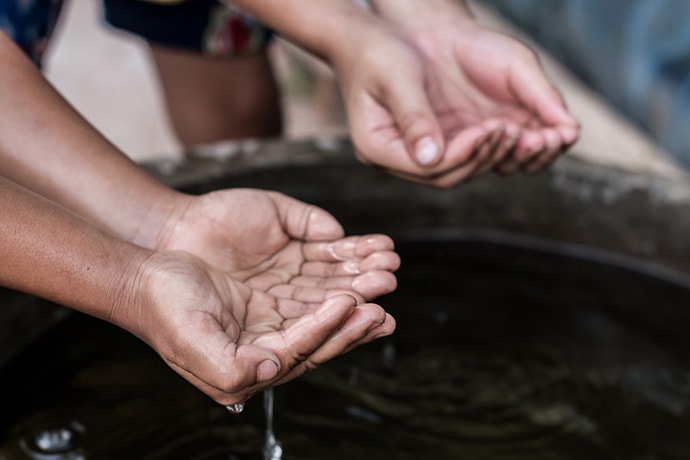
Photo Credit: @R_Tee via Twenty20
For decades, we’ve heard that access to clean water changes everything. Not only does it improve the health of entire communities, it also gives women freedom to earn an income and children time to go to school, when they don’t have to spend hours walking miles every day just to gather water. That’s why global progress has been rightly celebrated: Between 2000 and 2015, 1.6 billion people gained access to clean water for the first time.
But according to the UN Children’s Fund (UNICEF), as much as 30 to 50 percent of water, sanitation and hygiene (WASH) projects fail after just two to five years, leaving recipients of the new wells, toilets or other projects back where they started – even worse off sometimes. This has led to calls for the WASH sector to be more upfront about failures and understanding what went wrong. Without learning from mistakes, we will miss the mark on Sustainable Development Goal 6: to ensure the availability and sustainable management of water and sanitation for all.
There are many reasons why water projects fail. But Kirk Anderson, director of international programs at Water1st, says the failure rate is not unique to the WASH sector. In fact, he says that most development efforts suffer problems with sustainability, simply because of the nature of aid.
In a market system, when buyers do not purchase faulty, poor or unwanted products, manufacturers quickly get the message that they need to either improve their product or go out of business. But in a donor system, the users are not the buyers. Therefore, unless the buyers (development organizations, in this case) are regularly asking the users for feedback – and the users are willing to give honest feedback about the gift they received – buyers often continue to fund and implement faulty, poor or unwanted programs.
Pit latrines are a great example of this. For countries like India that are making a strong push to eliminate defecation in open spaces, installing a pit latrine is a cheap and easy way to mark off another community as having access to sanitation. But pit latrines can smell so bad that many sit unused after just a few months. And once a pit latrine is full, who’s going to empty it?
Similarly, some clean water projects are simply insufficient. Water1st’s Founder and Executive Director Marla Smith-Nilson once wrote about how she visited the site of a sealed spring-water catchment chamber in Ethiopia that was supposed to be an “improved water source.” Yes, the catchment was a good way to protect the clean spring water, but the spring itself didn’t provide enough water throughout the year for the community. In additional, the water point wasn’t conveniently located for everyone in the community, which meant that some people still had to walk hours to get there. Then, they had to wait in line for several more hours, because the water trickled so slowly.
On the other hand, rain catchment systems – like the ones Hands for Peacemaking Foundation is installing in Guatemala – collect enough water during the rainy seasons to last households and communities throughout the dry seasons, without them having to walk hours to access it.
To make collected water safe for drinking, some organizations like Friendly Water for the World are teaching groups of people how to make Biosand Water Filters and set up businesses to sell them. The filters are essentially large buckets filled with layers of “specially selected and washed sand and gravel” that remove pathogens and suspended solids. Microorganisms in the sand can remove up to 99 percent of the pathogens. Up to 95 percent of dirt and metals and 100 percent of worms are also removed during the slow filtration process, according to Friendly Water for the World. The technology comes from the Centre for Affordable Water and Sanitation Technology (CAWST), a Canadian non-profit and licensed engineering firm. According to Friendly Water for the World, the greatest challenge is not the technology itself, but the social dimension – introducing the approach to communities and encouraging them to use it consistently.
The high failure rate of water projects is also often attributed to a lack of monitoring. The World Bank has estimated that less than 5 percent of water projects are visited after they’re constructed, and less than 1 percent are monitored long-term. This means that most organizations are unaware – or willfully ignorant – when a project breaks or sits unused. Many water systems are feats of engineering that need to be properly maintained, yet in many cases, no one has been trained on how to maintain the system, or spare parts are not readily available to fix it.
That’s why WaterAid, Water1st and others have centered their strategies on local sustainability. With strong input from local partners, these organizations first tackle the technical sustainability of their projects: Is the system easy to use and maintain? Can the technology be used anywhere in the world? Are the spare parts affordable and available locally?
Then, they also set up the local communities to keep the projects running. WaterAid works closely with local governments, as befits its belief that ultimately, it is the responsibility of governments to ensure that all of their citizens have access to water and sanitation services. Beneficiaries also contribute financially or in other ways at the start of projects to instill a sense of ownership.
In the case of Water1st, not only does the organization train communities on the technical aspects of independently maintaining the new water systems, but it also helps communities institutionalize payment of water fees. According to Water1st, when a project is owned and operated by the beneficiaries, they are motivated to keep it running. Water1st also routinely follows up on its projects to make sure they’re not only functioning but that other sociological issues – like hierarchies or conflicts within the community – are not derailing their success.
For years now, the business sector and self-help books have preached the concept of “failing forward” – that failure is inevitable, and ignoring it will precipitate bigger problems down the road, while learning from failure will propel us toward success and innovation. Unfortunately, the WASH sector – and international development as a whole – has been slow to embrace this mindset, mostly because of the risk that donors will pull funding if they admit failure.
But some organizations are starting to realize there is no alternative route to success. BRAC and Canada’s Engineers Without Borders are hoping to push the entire industry forward by publishing their mistakes in annual “failure reports.” At one point, Water1st, along with a host of other organizations, also developed a “Water for Life rating” that independently rated WASH programs on their long-term sustainability. Although the rating system didn’t take off – likely because organizations perceived it as a risk – Water1st believes it still has potential to propel WASH programs forward if donors were willing to support organizations that go through the process. Those that received a high score could be awarded a grant to keep doing what they’re doing, while those that scored poorly would be given financial support to fix the problems.
With 2030 fast approaching as the “deadline” for the Sustainable Development Goals, the WASH sector doesn’t have time to continue pushing its sustainability issues out of sight. Failing forward is the only way to “ensure the availability and sustainable management of water and sanitation for all.”
* * *
Friendly Water for the World
Founded in 2010, Friendly Water for the World is a dynamic, rapidly growing, 501(c)(3) non-profit organization based in Olympia, WA. Its mission is to expand global access to low-cost clean water technologies and information about health and sanitation through knowledge-sharing, training, applied research, community-building, peacemaking, and efforts at sustainability. The organization empowers communities abroad to take care of their own clean water needs, even as it empowers people in the U.S. to make a real difference. Friendly Water for the World currently works in 15 countries, and has assisted more than 190 marginalized and oppressed rural communities – including widows with HIV, people with albinism, survivors of war-time rape, victims of domestic violence and sexual assault, indigenous tribes, and unemployed youth – ensure their own safe drinking water while becoming employed in the process. http://www.friendlywater.net/
Hands for Peacemaking Foundation
Many villages that populate the mountainous areas of NW Guatemala are continually faced with a daily struggle to obtain water for survival. Since most village locations were based on available land, and not by the availability of natural resources, they often lack basic water resources. Many water sources have dried up due to the over-harvesting of trees to be used for firewood – an example of the domino effect that one resource has on another. Hands for Peacemaking Foundation (HFPF) has partnered with villages to install water storage tanks. These simple but effective means to collect water during the rainy season are coupled with water filters to meet the basic needs. The resulting water system doesn’t replace a well or spring, but it does provide emergency water that can mean life or death for villagers. HFPF has included the introduction of forest management in its training and education of villages after the installation of catchment systems. To date, the organization has installed 448 water catchment systems and 226 water filters in 17 villages. http://www.handsforpeacemaking.org/
Mercy Corps
Mercy Corps helps people around the world get clean water by providing water during emergencies, building wells to reduce long treks (often made by vulnerable girls and women), repairing damaged water infrastructure and helping construct reservoirs to ensure communities have access to clean water in the future. In Zimbabwe, Mercy Corps restored a community’s water infrastructure to provide clean and safe water for over 43,000 people. In turn, this also significantly reduced the distance girls had to travel to collect drinking water for their families from 2500m to 80m. During emergencies, access to clean water plays a vital role in preventing disease outbreaks and other water-borne illnesses. In response to the ongoing humanitarian crisis in the Democratic Republic of Congo where three quarters of the population lack access to clean water, Mercy Corps has provided over 600,000 displaced people with safe drinking water to help keep their families healthy and prevent disease. In 2018, Mercy Corps connected more than 3 million people to clean water and hygiene and sanitation facilities during emergencies across the globe. https://www.mercycorps.org/
MSR Global Health
MSR is a leading innovator and manufacturer of low-cost, field-proven products that improve access to basic human needs for people around the globe. With 50 years of technical engineering and manufacturing expertise, MSR is developing technologies that increase access to vital needs such as clean water, sanitation, and hygiene. https://www.msrglobalhealth.com
Path From Poverty
Path From Poverty transforms lives and communities by working with rural women’s savings groups in eastern Kenya. Launched in 2000, the organization now comprises 52 groups with over 1,100 members. It provides training in leadership, group governance, small business development, finance management and community service that supports women to launch their individual or group income-generating projects and to pool group savings and purchase 10,000-liter rainwater catchment tanks. To show its support and encouragement for their hard work, Path From Poverty also sends eight “gift” water tanks each month to needy women. In 2018, Path From Poverty installed 191 rainwater tanks that now provide clean, safe water to over 2,000 women, their families, and neighbors. https://pathfrompoverty.org/
Splash
Splash is a nonprofit organization that designs child-focused water, sanitation, hygiene (WASH), and menstrual health solutions for governments in some of the world’s biggest, low-resource cities. Through Project WISE (WASH-in-Schools for Everyone), Splash aims to reach every school in Addis Ababa, Ethiopia, and Kolkata, India, with WASH infrastructure, behavior change programs, and strengthened menstrual health services, benefiting one million children by 2023. Splash’s approach to WASH includes high-quality water filtration systems, durable drinking and hand washing stations, improved toilets, teacher training, and hygiene education to ensure that kids learn healthy habits. This is accomplished through government partnership, supply chain development, local leadership, and other systems-strengthening activities. To date, Splash has completed over 1,700 projects at child-serving institutions, including schools, hospitals, shelters and orphanages. Splash reaches over 430,000 children a day in eight countries (China, Cambodia, Bangladesh, Ethiopia, India, Nepal, Thailand, and Vietnam). http://splash.org/
Water1st International
Water1st prides itself on funding sustainable water projects that involve local communities, local women, as well as a consistent funding stream. Since its founding in 2005, Water1st has provided clean water to over 188,000 people. While its projects focus on providing easy access to clean water, the organization also ensures that projects integrate toilets and hygiene education. Water1st’s success centers on robust program evaluation of each of its funded projects to ensure that deliverables are effective and community needs are met. http://www.water1st.org/
WaterAid
WaterAid is working to make clean water, decent toilets and good hygiene normal for everyone, everywhere within a generation. As the leading international clean water nonprofit, WaterAid works in 28 countries to change the lives of the poorest and most marginalized people. Since 1981, WaterAid has reached 26.4 million people with clean water and 26.3 million people with decent toilets. http://www.wateraid.org/us
World Vision
World Vision is the leading NGO provider of clean drinking water, reaching one new person every 30 seconds. Focusing on the rural, ultra-poor, combining access to clean water with sanitation and hygiene interventions and engaging communities in sustainability efforts, World Vision and its partners are committed to expanding their reach to one new person every 10 seconds with clean water and sanitation by 2020. With the use of right-sized equipment, appropriate water sources, manual drilling, mechanized wells with solar pumps and over 500 WASH professionals who live and work in the communities where they lead efforts, nearly 80 percent of World Vision wells continue to function at a high level after 20 years. http://www.worldvision.org/our-impact/clean-water
Organization Profile
WaterAid: Working Towards Clean Water for All
By Arielle Dreher

Molia Abdallah, 47, fills a bucket of water at the solar-powered water scheme being constructed in Chicoma, Nampula Province, Mozambique. Photo Credit: WaterAid/Chileshe Chanda
In most parts of the U.S., we don’t think twice about turning on the faucet or hopping in the shower. With infrastructure in place, it’s incredibly easy to forget that public utilities, engineering, and coordination enable access to fresh water for millions of Americans every day. But this kind of infrastructure is expensive to build and maintain, especially in parts of the world where governments are just beginning to prioritize water for their people.
Worldwide, 844 million people do not have access to clean water, UNICEF estimates. WaterAid, a global nonprofit is working to change this.
Established in 1981 by members of the U.K. water industry, WaterAid works to close the gap globally on access to clean drinking water, sanitation, and hygiene (referred to as “WASH” for short). The organization is now bringing water resources to communities in 28 countries, on three different continents.
“The emphasis was really on water supply in the early days, then coming on to sanitation and how to do that effectively, and now hygiene is a big focus, so it’s an integrated approach,” said Vincent Casey, WaterAid senior manager for water, sanitation and hygiene.
Access to clean water, sanitation, and hygiene is crucial not only for daily life but also for health. Every two minutes, diarrhea caused by dirty water or poor toilets kills a child under five years old. Casey says this is why WaterAid also focuses on toilets and hygiene practices in the communities where it works. Clean water alone does not impact the disease burden that exposed human waste can have on a community.
WaterAid has staff in 34 countries, including those where advocacy and fundraising work happen, like in the U.S. and the U.K.
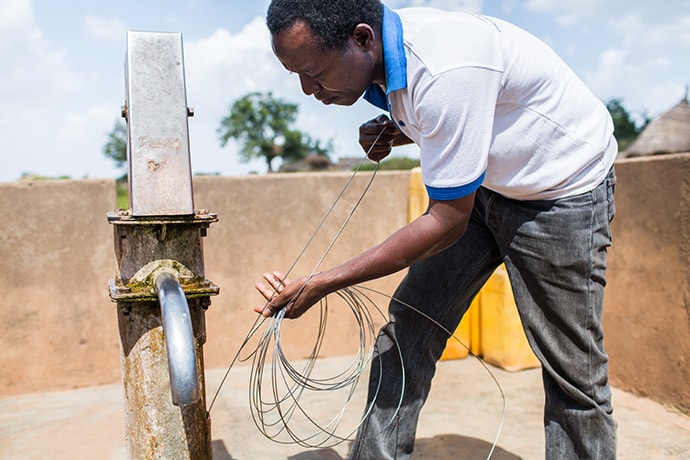
WaterAid Burkina Faso’s Regional Learning Center Coordinator, Lucien Damiba, removes a water monitoring device from a borehole. Photo Credit: WaterAid/Andrew McConnell
A large part of the WaterAid model is ensuring that local and national governments recognize the crucial needs of their people for access to clean water. Casey said WaterAid works at all levels of government, from local communities to national policymakers.
“We work a lot with districts or local governments, so operation-wise not only the delivery of WASH but how you keep those benefits in place,” Casey said.
In other words, helping create national or district-level policies is important, but not sufficient. WaterAid also works with other NGOs and education and health advocacy organizations to ensure that they are including education about handwashing, good hygiene and sanitation practices. Each in-country WaterAid team works to influence policy, and sometimes directly implements water initiatives, as well.
Back in the 1990s, WaterAid helped introduce gravity-fed water schemes for large communities with thousands of people to get water. In each case, the organization created a structure to govern the new utilities. Casey used WaterAid’s work in Ethiopia, which began in the 1990s, as an example. After a management arrangement for a local water utility is recognized by the national government, this type of multi-village model can become a reality.
“That’s literally all the villages nominating someone to a board, and that board appointing an executive board to run the scheme, and then that executive board contracts mechanics and people who do financial management and revenue collection,” Casey said.
WaterAid evaluated these types of management models in Ethiopia over several decades, and the most recent evaluation from 2018 shows that they are still performing really well, Casey said. Such large-scale gravity-fed water schemes usually supply water from higher ground springs to lower ground areas. There are no pumps or complex equipment to maintain, making it an easier model to establish.
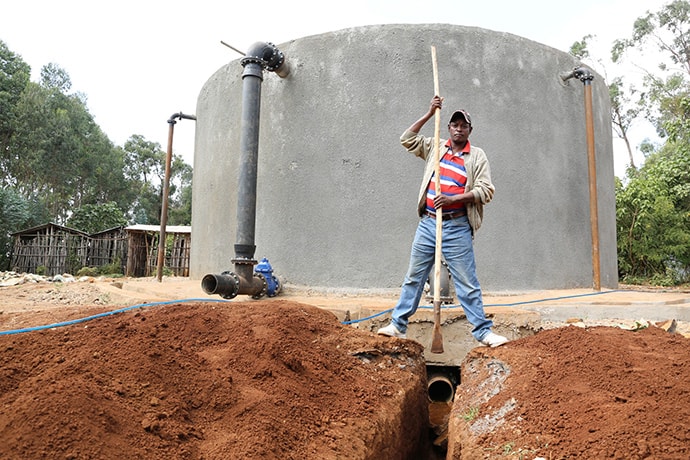
Mesay Garedew of Oromia, Ethiopia, was one of the most actively involved community members during the development of springs that channel water into the town’s distribution system using the natural force of gravity. Photo Credit: WaterAid/Behailu Shiferaw
Not all of the countries where WaterAid works can support these types of models, especially in rural areas where water is difficult to access underground, or may be contaminated with arsenic or high salinity. In these places, financial stability and investment are necessary. This is where political advocacy comes in.
“You have to be working to push government to take up its responsibility to ensure that everyone has access to these basic things. Governments are responsible for making sure that happens,” Casey said. “(In some countries) they’re not doing it and not delivering on it, and they need to. That needs a push not only from civil society but from individuals themselves, to demand better services.”
Part of WaterAid’s work is connecting water utilities and private companies with community water associations established in the countries where they work. These relationships are not just for financial support, but also to share best practices for sustainability of services.
“A good utility has to be able to have good cost recovery, a good billing system, and good revenue collection processes,” Casey said.
Those partnerships also support new water associations with challenges like reducing water lost due to infrastructure and figuring out how to improve efficiency.
While WaterAid helps find financing and investment for local utilities in the countries where it works, the organization also encourages governments to invest even more. Casey said leveraging government investment has worked in some countries, including Ethiopia.
At its best, WaterAid’s model enables the nonprofit to leave a country entirely. Casey said this is how the process is supposed to work if the job is done correctly. The key, he said, is establishing water utilities as professionalized services.
“It’s not just about building infrastructure, training a few people then walking away; it has to be a formal management model, which is legally recognized in the country and supported nationally,” he said. “And the problem is with a lack of resources, there may be legally recognized management models, but they’re not supported. So, they rely on various donor initiatives to provide the backup support to subsidize major maintenance.”
Ultimately and ideally, WaterAid wants to create a sustainable model for delivering water to communities with reliable funding sources before it leaves. Casey said the current challenge is in places where communities do have access to WASH, but suffer from very poor levels of service.
“People may have access on paper or be within proximity of a water supply installation, but the level of service provided isn’t necessarily very high,” he said. “It’s like a hidden crisis of poor service, poor water quality, long periods of service outage, long periods of service breakdown. It’s not simply a problem of lack of access—it’s beyond that.”
WaterAid has US offices in New York and Washington, D.C., with remote-based staff throughout the country, including in Seattle.
Goalmaker
Kirk Anderson, Director of International Programs, Water1st
By Allegra Abramo
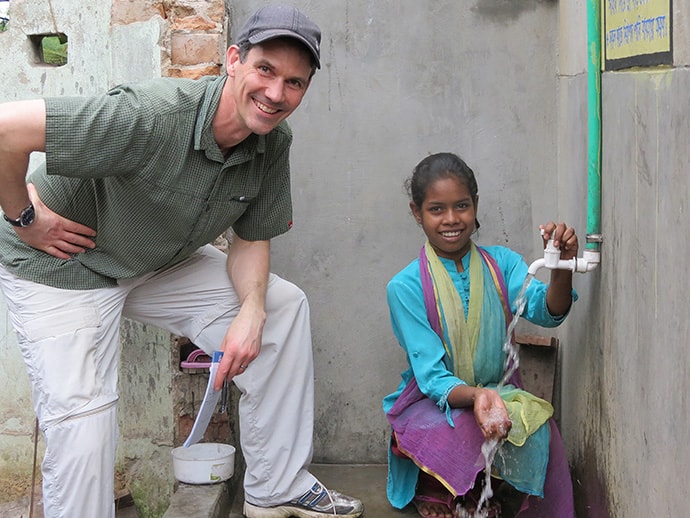
Chittagong, Bangladesh (2016) – Kirk Anderson poses with Israh Jahan, a young girl whose family lives in a low-income area in the city without access to clean water. Water1st worked with a local partner organization to help her family and neighbors construct this water system. Photo provided by Kirk Anderson.
As a young Peace Corps volunteer in Lesotho, Southern Africa, Kirk Anderson was hitchhiking to the capital when a United Nations truck stopped to give him a lift. He climbed in and found himself chatting with the undersecretary of health for Sub-Saharan Africa.
“What’s the most important health problem to address in this area?” he asked her.
She quickly replied, “It’s nice to have an easy question once in a while.” If every community had water, she told Anderson, 80 percent of her job would be done for her.
Her response matched Anderson’s experience as a middle school teacher in the country. When his community ran out of water in the dry season, kids didn’t come to school because they were waiting at the spring to fill a cup with water so they could make breakfast.
“Lack of access to water is really holding my community back,” Anderson realized.
Yet most water projects he’d seen had failed, in large part because governments and funders installed pipes and pumps, and then walked away — leaving neither the human capital nor financial resources to ensure they remained viable.
A decade and half later, when Anderson was working on salmon recovery for King County, he still wasn’t sure how development projects could be more effective than those he’d witnessed. Then his wife took him to a talk by Marla Smith-Nilson, who would go on to found Water1st. Smith-Nilson spoke about the importance of working through local partners who understand the subtleties of their cultures and communities.
“Oh my gosh,” Anderson thought. “That’s the thing that’s been missing from the projects I’ve seen.”
Anderson joined the fledgling Water1st, first as board chair and then as director of international programs. His wife, Jennifer Norling, was also an early supporter and today is Water1st’s director of development and communications. The organization provides ongoing funding and support to partner organizations that build and maintain water infrastructure in countries across Central America, South Asia and Africa.
“We call our projects technologically simple, sociologically complex,” Anderson says. “You need a local partner organization to tackle all those complex social issues.”
Communities are also motivated to keep the water flowing because they get a high-value service: Instead of a central hand-pump, projects include household water taps.
Families pay a monthly fee for the water they use. That ensures there’s money on hand to rapidly make repairs and hire plumbers and other experts when needed. Increasingly, projects are incorporating household meters to allocate the costs of operating the water system fairly and to encourage good management of an incredibly valuable shared resource.
Consistent funding from Water1st means organizations can retain staff and continue to build their expertise, Anderson explains. It also allows them to translate lessons learned into improvements. In Honduras, for example, the partner organization agreed to add meters only after five years of working with Water1st; now all new projects in the country have meters.
The 14-year-old organization has also learned from its failures. In Ethiopia, Water1st initially funded an organization to put in community water points. But those aren’t selling much water, Anderson said, indicating that people are using it only for cooking and drinking, and not to improve their hygiene.
A community tap is what Anderson calls a “marginal improvement.” While it provides a source of clean water, people still must waste time traveling and waiting in line. Moreover, once people have to travel more than about 100 meters, water use — and with it, hygiene — falls dramatically.
“I don’t want my mom walking 100 meters and carrying water back to her house every morning, so that she can cook, drink, clean the house,” Anderson says. “That would be a problem for me, so why would I build a problem for someone else?
Instead of wasting money on marginal improvements, Anderson argues, invest in real solutions from the start.
Water systems that reach all the way into people’s homes are a cost-effective solution, Anderson says. They allow families to install flush toilets instead of latrines that attract disease-spreading flies. They also encourage people to bathe frequently, which is especially important in places where people have frequent contact with livestock, soil and sick children.
If you build solutions that people love, they will keep them going, Anderson says. “Because they remember what it was like to carry water, so not carrying water, that’s a big motivator. They remember what it was like to have a latrine, so keeping your toilet working, that’s a big deal.”
Lesson learned: In Ethiopia, Water1st is now working with its local partner to install household taps.
Anderson says he’s astonished how hard people will work to build effective solutions. He recalls spending a day helping dig a trench for a pipeline in Honduras. “I imagine looking 5 miles down the road to where the community is, and looking at how little I accomplished in one day, and thinking, ‘Are we going to complete this in my lifetime?’”
Yet “they don’t give up,” Anderson says. “If you are willing to work that hard, I’ll invest in that.”
From Our Blog
Introducing Project WISE (WASH-in-Schools for Everyone)
By Cyndie Berg, Director of Business Development, Splash

11 year old Kidist uses the water station at her school in Addis Ababa. Photo credit: Gavin Gough for Splash.
In March, Splash’s Seattle office hosted two of its leaders from Ethiopia: Dawit Alemishet, Country Director, and Kelbessa Wordofa, Director for Project WISE (WASH-in-Schools for Everyone). They were in town to meet with colleagues planning the launch of Project WISE (WASH-in-Schools for Everyone), an initiative to reach every government school in Addis Ababa, Ethiopia, and Kolkata, India, with WASH infrastructure (water storage, filtration systems, drinking and handwashing stations, and improved toilet facilities), as well as behavior change programs for children and adults, and strengthened menstrual health services for girls aged 10 and above.
Splash has reached 79 schools serving 78,000 children in Addis Ababa, and 194 schools serving 55,985 children in Kolkata. Through Project WISE, the organization expects to reach approximately 1,600 schools serving one million children by 2023.
Splash’s efforts will benefit even more children like Kidist, a fifth-grader who is 11 years old. Kidist is very pleased about the improvements that Splash has made at her school. She especially loves the different colored drinking and handwashing stations and is attracted to wash her hands and drink from them.
In the past, she and her brothers used to bring water from home, but it was never enough to last all day. As Kidist explained, they couldn’t bring a very big bottle of water, since her parents don’t have access to water in their home and needed to source water from the neighborhood tap. Sometimes her brothers finished their water before lunch, and she would share her own half-liter bottle with them.
Thanks to Splash, Kidist and her brothers and all the other students can access clean water at school all day long.
Welcome New Members
Please welcome our newest Global Washington members. Take a moment to familiarize yourself with their work and consider opportunities for support and collaboration!
Heifer International
Heifer’s mission is to work with communities to end hunger and poverty and to care for the earth. heifer.org
Member Events
April 19: Seattle International Foundation // In Solidarity with Nicaragua: One Year of Resistance
April 2 – June 4: UW Henry M. Jackson School of International Studies // Spring 2019 – Trump in the World, Lecture Series
April 25: WaterAid // More Than Just Coffee: POC Coffee Panel + Happy Hour
April 29: Stolen Youth // Not on Our Watch – Luncheon
Career Center
Product Leader, RoundGlass
Development Assistant, World Relief
Regional Major Giving Officer, YWCA
Manager, Western Region, Global Impact
Check out the GlobalWA Job Board for the latest openings.
GlobalWA Events
April 25: Failing Fast Forward: Learning to Build Water Systems that Last
June 7: Disability Inclusive Development Initiative Workshop
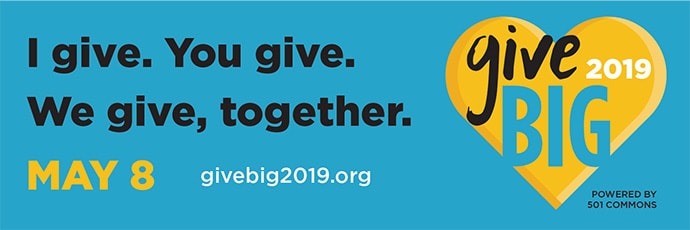
Don’t miss your chance to attract new donors to support your organization. The deadline to register for GiveBIG is Friday March 29. By that day you also need to have paid your registration fees or you will not be able to participate. GiveBIG raised $16,500,000 last year. It is easy to register and once you are registered you can participate for free in the GiveBIG fundraising trainings with Ariel Glassman from Ostara. 501 Commons is also providing Fundraising Accelerator to help you mount a successful campaign. Every two weeks 501 Commons will send you specific actions you can take to prepare for GiveBIG.
Mark Your Calendar
- April 19: Last day for profile changes
- April 23: Early Giving begins
- April 28: Seattle Times Giving Guide published
- May 7: Early Giving ends
- May 8: GiveBIG!
If you have questions or need assistance contact 501 Commons by phone at 1-833-962-3615 or by email at givebig@501commons.org